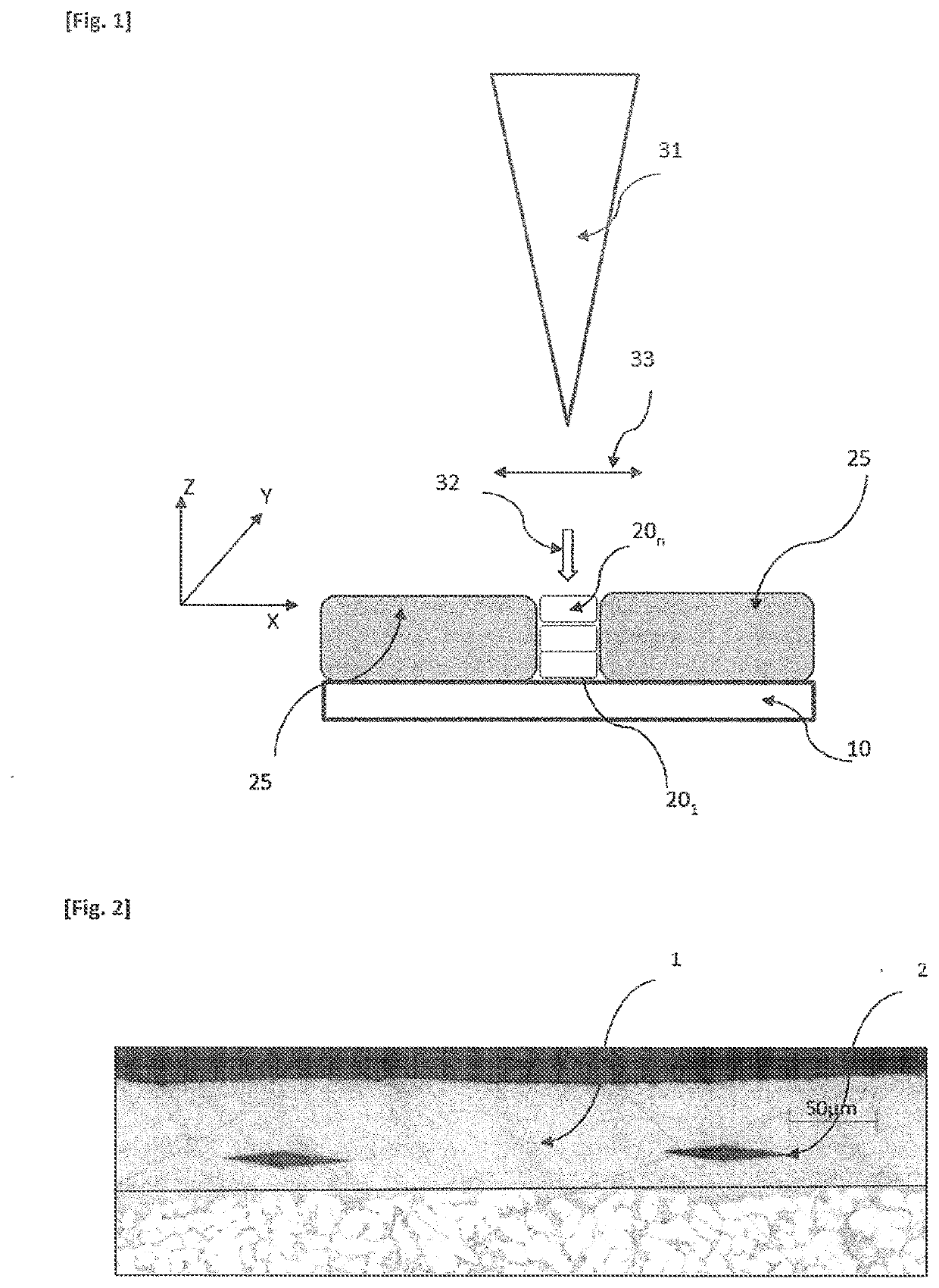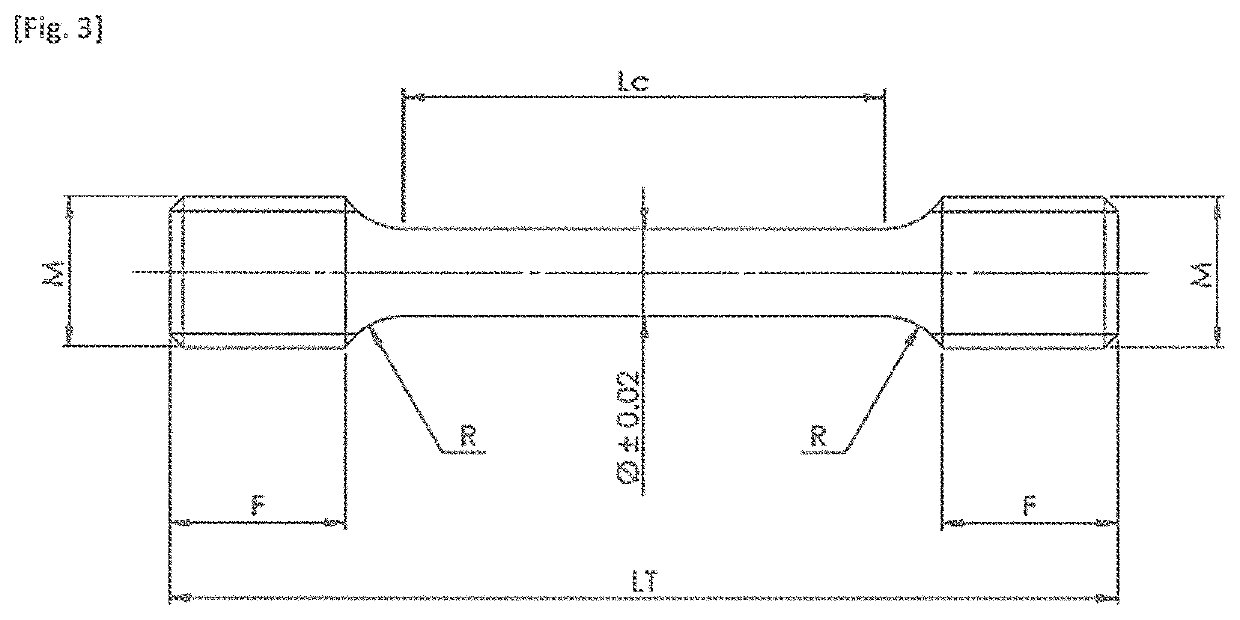Process for manufacturing an aluminum alloy part
a manufacturing method and technology for aluminum alloys, applied in the direction of additive manufacturing, process efficiency improvement, additive manufacturing apparatus, etc., can solve the problems of limited mechanical properties, poor mechanical properties of solutions at high temperature, and high cost of solutions in powder form, so as to reduce roughness, reduce the harmful effect of mechanical strength, and increase the hardness of products obtained
- Summary
- Abstract
- Description
- Claims
- Application Information
AI Technical Summary
Benefits of technology
Problems solved by technology
Method used
Image
Examples
example 1
[0110]Two alloys according to the present invention, called Innov1 and Innov2, and an 8009 alloy of the prior art, were cast in a copper mold using an Induthem VC 650V machine for obtaining ingots 130 mm high, 95 mm wide and 5 mm thick. The composition of the alloys is given as a percentage proportion by mass in the following table 1.
TABLE 1AlloysSiFeVNiZrCrReference1.88.651.3———(8009)Innov1—0.17—324Innov2—0.21—526
[0111]The alloys as described in table 1 above were tested by a fast prototyping method. Samples were machined for sweeping the surface with a laser, in the form of slices with dimensions 60×22×3 mm, from the ingots obtained above. The slices were placed in an SLM machine and the surface was swept with a laser following the same sweep strategy and method conditions representative of those used for the SLM method. It was in fact found that it was possible in this way to evaluate the suitability of the alloys for the SLM method and in particular the surface quality, sensitiv...
example 2
[0121]An alloy according to the present invention having the composition as presented in Table 3 below, in percentages by mass, was cast in the form of an ingot.
TABLE 3AlloyCrNiZrInnov3432
[0122]The ingot was next transformed into powder by atomization using a VIGA (vacuum inert gas atomization) atomizer. The particle size of the powder was measured by laser diffraction with a Malvern 2000 instrument and is given in Table 4 below, in μm.
TABLE 4AlloyD10D90Innov31150
[0123]The powder of the Innov3 alloy was used successfully for tests in accordance with the SLM technique using a FormUp 350 selective laser melting machine, sold by the company AddUp. These tests were performed with the following parameters: thickness of layer: 60 μm, power of the laser 370 W, heating of the plate to around 200° C., vector separation 0.13 mm, speed of the laser 1000 mm / s.
[0124]Cylindrical test pieces (45 mm high and 11 mm in diameter) were impressed for tensile tests in the construction direction Z (the mo...
PUM
| Property | Measurement | Unit |
|---|---|---|
| temperature | aaaaa | aaaaa |
| temperature | aaaaa | aaaaa |
| temperature | aaaaa | aaaaa |
Abstract
Description
Claims
Application Information
 Login to View More
Login to View More - R&D
- Intellectual Property
- Life Sciences
- Materials
- Tech Scout
- Unparalleled Data Quality
- Higher Quality Content
- 60% Fewer Hallucinations
Browse by: Latest US Patents, China's latest patents, Technical Efficacy Thesaurus, Application Domain, Technology Topic, Popular Technical Reports.
© 2025 PatSnap. All rights reserved.Legal|Privacy policy|Modern Slavery Act Transparency Statement|Sitemap|About US| Contact US: help@patsnap.com


